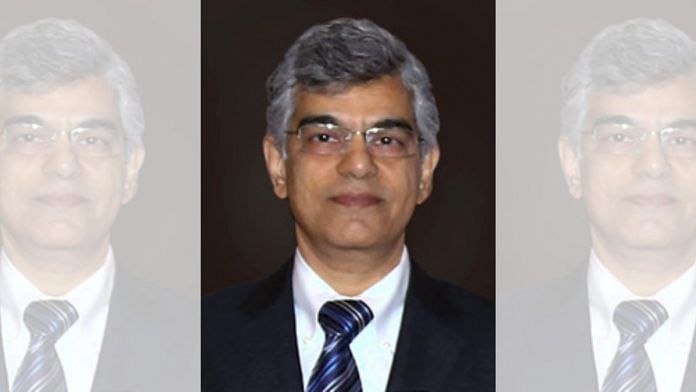New Delhi: “Had the Agnipath scheme been introduced in a clear and gradual manner, we wouldn’t have broken so many hearts and the aspirations of young Indians,” said Mahesh Vyas, managing director and CEO of the Centre for Monitoring Indian Economy (CMIE), Thursday.
He was in conversation with ThePrint’s editor-in-chief, Shekhar Gupta, and senior associate editor Manasi Phadke, on ‘Off The Cuff’.
Asked to share his thoughts on the government’s new Agnipath scheme of recruitment for the armed forces, Vyas said, “For a long time, for the last two-three years or even more, youngsters have been preparing to enter the armed forces with a certain understanding of what that job is going to be. This is a very desired job. They have been preparing for it and when the time comes to actually go there — they (the government) said hey, we are not taking you all, they have changed the rule of the game”.
Vyas, however, said that the armed forces will be the apt authority to answer whether the Agnipath is a good scheme or not.
“If it’s a strategy to change the share of labour and machines in the armed forces, I am not the right person to answer that question. It is for the armed forces to tell us. I believe they may have a case for reducing the labour and increasing machines,” he said.
Under the Agnipath scheme announced last month, youth between 17-and-a-half years of age to those aged twenty-one will be recruited as soldiers for a period of four years, with 25 per cent from each batch being enrolled in the regular cadre of the armed forces after their four-year service duration.
The announcement of the scheme was followed by widespread protests by aspirants who feared being left without a job after the four year tenure.
Also read: ‘We think planet is a cake we can cut into pieces,’ Sadhguru warns of soil & climate crisis
Quality of unemployment statistics
Asked about how good Indian statistics on unemployment are, Vyas gave two answers — they’re good, but are delayed.
“When it comes to unemployment, the government conducts the Periodical Labour Force Survey (PLFS). I think it’s a good survey. It covers the employment segment quite well,” said Vyas.
“The limitation is that it’s not fast enough. Therefore its numbers are a little delayed. For example, the latest PLFS survey is for the year 2019-20 and we are in 2022,” Vyas added.
He also highlighted the rural-urban divide in the survey.
“They do an urban survey every quarter, but their rural survey is only for the year. So you don’t get a picture fast enough. Whereas the CMIE survey, you have the numbers of the last week. But still, what PLFS does is good”, he said.
On pushing reforms
Vyas also answered questions about how to bring more reforms in the Indian economy. Asked what it will take for India to create a sequel of 1991-1992 (the period of economic liberalisation), Vyas emphasised on the need of creating a conducive business environment.
He said: “As government one needs to make an economic environment conducive. So don’t call a company which took a loan from a bank and then became a non performing asset (NPA), a thief. NPAs are a part of the business, it happens”.
He also added that India needs to stop stigmatising capital.
“There can be frauds, however, but stigmatisation of capital is not a good strategy. Taking fear out of banks, bankers, entrepreneurs, having a stable policy where people can prosper in a competitive environment, reduced import tariffs, increased competition, let capital flow,” said Vyas.
“What you’ve done two decades ago, do more of that,” he concluded.
Also read: Covid not as bad for Indian economy as 2008 global financial crisis, says former CEA Subramanian




